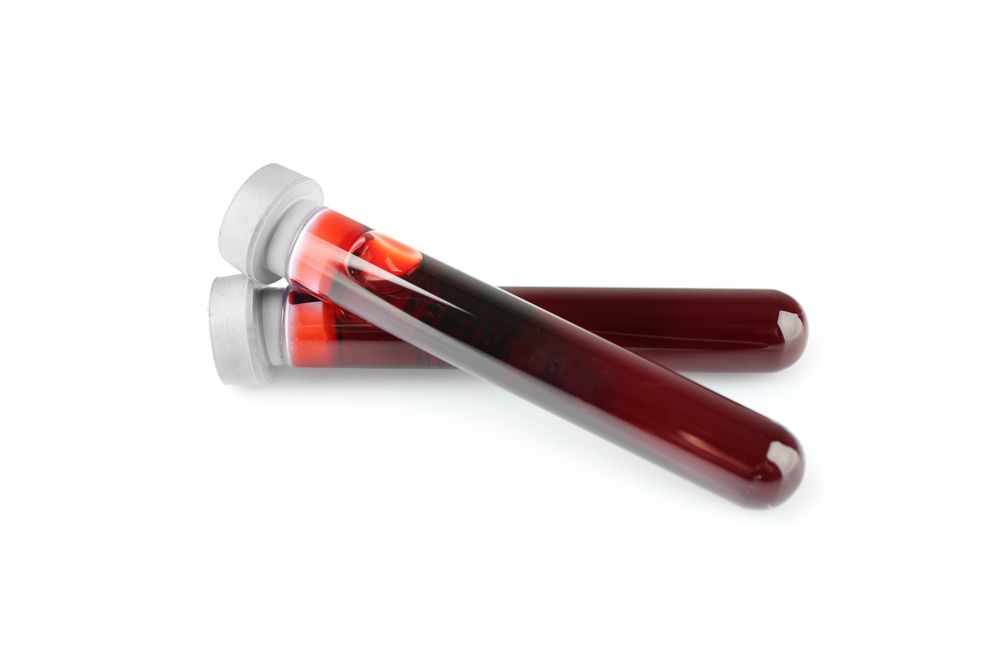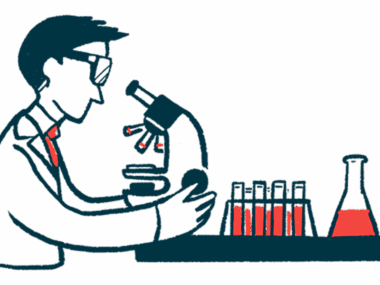Trials Support NfL Levels as Marker of Disease Activity in Relapsing MS
Written by |

Africa Studio/Shutterstock
Larger declines with treatment in blood levels of neurofilament light chain (NfL), a marker of nerve cell damage, are associated with fewer brain lesions, less brain shrinkage, and lower relapse rates in people with relapsing forms of multiple sclerosis (MS), a study reported.
These results, based on a post-hoc analysis of two Phase 3 clinical trials that supported the approval of Zeposia (ozanimod) to treat relapsing MS, add to previous studies linking high NfL levels with greater disease activity and disability.
They also further support NfL as a potential biomarker of disease activity and treatment response in relapsing forms of MS.
The study, “Plasma neurofilament light chain concentrations as a biomarker of clinical and radiologic outcomes in relapsing multiple sclerosis: Post hoc analysis of phase 3 ozanimod trials,” published in the European Journal of Neurology.
Neurofilaments are major structural proteins of neurons, consisting of three subunits: heavy, intermediate, and light chains. When nerve cell fibers are damaged and neurons die, neurofilaments are released into the cerebrospinal fluid (CSF) — the liquid that surrounds the brain and spinal cord — and detected in the bloodstream.
As such, neurofilament levels in the blood and CSF have been used as biomarkers for neuronal damage and death in a number of neurodegenerative conditions. Notably for MS, NfL levels were previously linked to risk of disability, disease activity, and treatment response.
An international team of researchers evaluated whether blood NfL levels could serve as a biomarker of neuronal damage and disease activity in relapsing MS through a post-hoc analysis of two Phase 3 trials of Zeposia: SUNBEAM (NCT02294058) and RADIANCE (NCT02047734).
A post-hoc analysis is an examination of data after a trial’s completion.
Bristol Myers Squibb’s Zeposia, given daily as an oral capsule, works by trapping immune cells inside lymph nodes, preventing them from entering circulation and reaching the brain and spinal cord, where they promote inflammation and nerve cell damage.
The trials, involving more than 2,500 adults, showed that two different doses of Zeposia (0.5 mg and 1 mg) were superior to Biogen’s Avonex at reducing patients’ relapse rates, brain lesions, and loss of brain volume, and led to clinically meaningful improvements.
Avonex is an approved, once-weekly injectable formulation of interferon beta-1a that reduces MS relapses by easing inflammation and preventing pro-inflammatory cells from reaching the brain and spinal cord.
Researchers assessed the effects of Zeposia against Avonex on patients’ NfL levels, as well as the potential associations between NfL and clinical and MRI-based outcomes.
More than 80% of trial participants had their NfL levels measured at baseline (study start) and after one year (SUNBEAM) or two years (RADIANCE) of treatment. Demographics and baseline disease characteristics of these patients were similar between these studies.
Results showed that patients’ median baseline NfL levels were also similar in these two trials — 14.7 picogram (pg)/mL in SUNBEAM and 13.4 pg/mL in RADIANCE — and that higher levels were significantly associated with more new or enlarging brain lesions and greater brain volume loss.
Baseline NfL levels were also higher in patients with on-treatment relapses than in those without them, but this association failed to reach statistical significance.
In the trials, both doses of Zeposia led to significantly greater reductions in NfL levels at one (median drop of 22.8–26.9% vs. 13.4%) and two years (19.7–23.5% vs. 15.5%), compared with Avonex.
Greater treatment-related NfL drops over time were associated with fewer new or enlarging brain lesions, less brain shrinkage, lower annualized relapse rate (ARR), and no evidence of disease activity (NEDA). NEDA was defined by the absence of new or enlarging brain lesions, relapses, and confirmed disability progression.
Researchers then developed models to predict the number of relapses over a one-year (SUNBEAM) or two-year (RADIANCE) period based on median changes in pNfL levels from baseline measures.
The modeling estimated that a 25% drop in blood NfL levels (similar to that observed with the highest dose of Zeposia) predicts the occurrence of 0.22 relapses in the first year, and 0.19 annual relapses over two years. A 13% NfL reduction (similar to that seen with Avonex) predicts an ARR of 0.36 in the first year, and of 0.29 over two years.
These findings highlighted that NfL “was associated with clinical and radiologic measures of disease and treatment effects in RMS [relapsing MS],” the researchers wrote.
The effect of potential influencing factors on NfL blood levels, such as age and simultaneous neurologic conditions, was not assessed in these analyses, which “may have limited detection of the full range of associations and predictive values,” the researchers noted.
However, the results “support the potential use of [NfL] to characterize RMS at a specific time point and to serve as a biomarker to monitor and predict disease activity and treatment response,” the team concluded.





